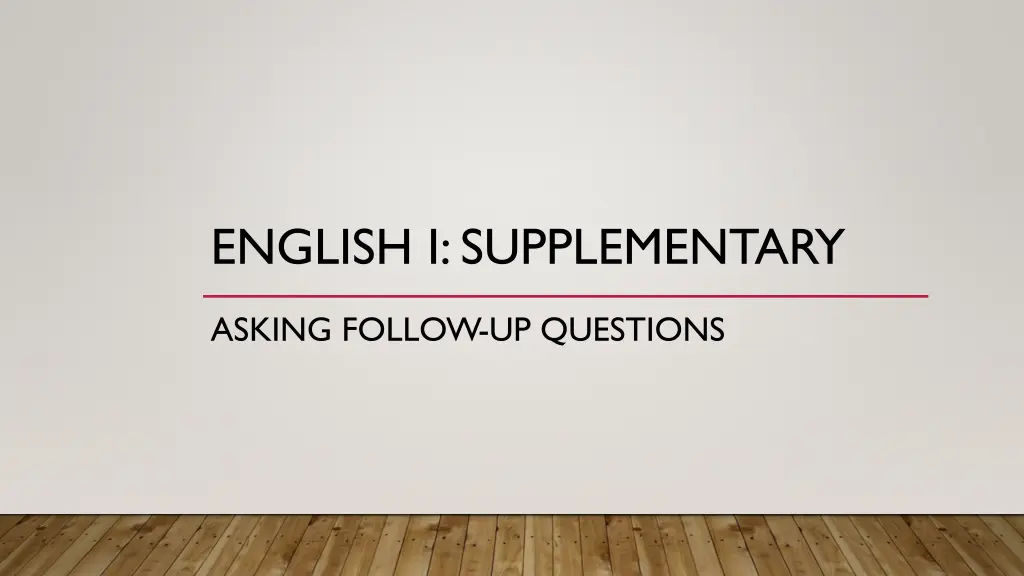
Mastering Follow-up Questions in English
Learn the importance of asking follow-up questions in conversations, the different forms such as using auxiliary verbs or question words, and how to use them effectively to engage and seek more information while interacting in English.
Download Presentation

Please find below an Image/Link to download the presentation.
The content on the website is provided AS IS for your information and personal use only. It may not be sold, licensed, or shared on other websites without obtaining consent from the author. If you encounter any issues during the download, it is possible that the publisher has removed the file from their server.
You are allowed to download the files provided on this website for personal or commercial use, subject to the condition that they are used lawfully. All files are the property of their respective owners.
The content on the website is provided AS IS for your information and personal use only. It may not be sold, licensed, or shared on other websites without obtaining consent from the author.
E N D
Presentation Transcript
ENGLISH I: SUPPLEMENTARY ASKING FOLLOW-UP QUESTIONS
ASKING FOLLOW-UP QUESTIONS Why? -To seek more information -To explore a topic further -To show interest in the conversation
- We often use follow-up questions when we are listening, to show that we are interested or surprised. - They often do not need a response. They are like response tokens such as really, okay, yeah. - Follow-up questions are sometimes called reply questions.
There are 3 forms of Follow-up Question Follow-up question with auxiliary verb or modal verb Follow-up question with question words Follow-up question in conversation
FOLLOW-UP QUESTION USING AUXILIARY OR MODAL Follow-up questions are formed using the auxiliary verb or modal verb contained in the statement that the question is responding to. If there is no auxiliary verb or modal verb in the statement, we use do or doesin the present and did in the past: A: I got up early when I was a highschooler. B: Did you? A: I m having an English test next week. B: Are you?
FOLLOW-UP QUESTION WITH QUESTION WORDS Sometimes we ask follow-up questions to seek more information or dig deeper into the topic. The common question words (who, what, where, when, why, how) are often used in follow-up questions. A: What did you do yesterday. B: I went to the beach yesterday. A: Where did you go to the beach? Original statement: I went to the beach yesterday. Follow-up question: Where did you go to the beach?
FOLLOW-UP QUESTION WITH QUESTION WORDS Original statement: Subject + verb + object. Follow-up question: Question word + auxiliary verb + Subject + verb? Original statement: "She is reading an interesting book." Follow-up question: "What book is she reading?"
FOLLOW-UP QUESTION IN CONVERSATION In conversation, we often ask short questions about something that somebody else has just said. We often reduce wh- questions in conversation because the speaker and the listener know the context. In the following examples, the short form of the question is more correct, because the full form would sound artificial:
FOLLOW-UP QUESTION IN CONVERSATION A:I need to go to the shop. B:What for? (full form: What are you going to the shop for?) A:We need bread and milk. A: I m going out tonight. B: Who with? (full form: Who are you going out with?) A: Oh, just some friends.
